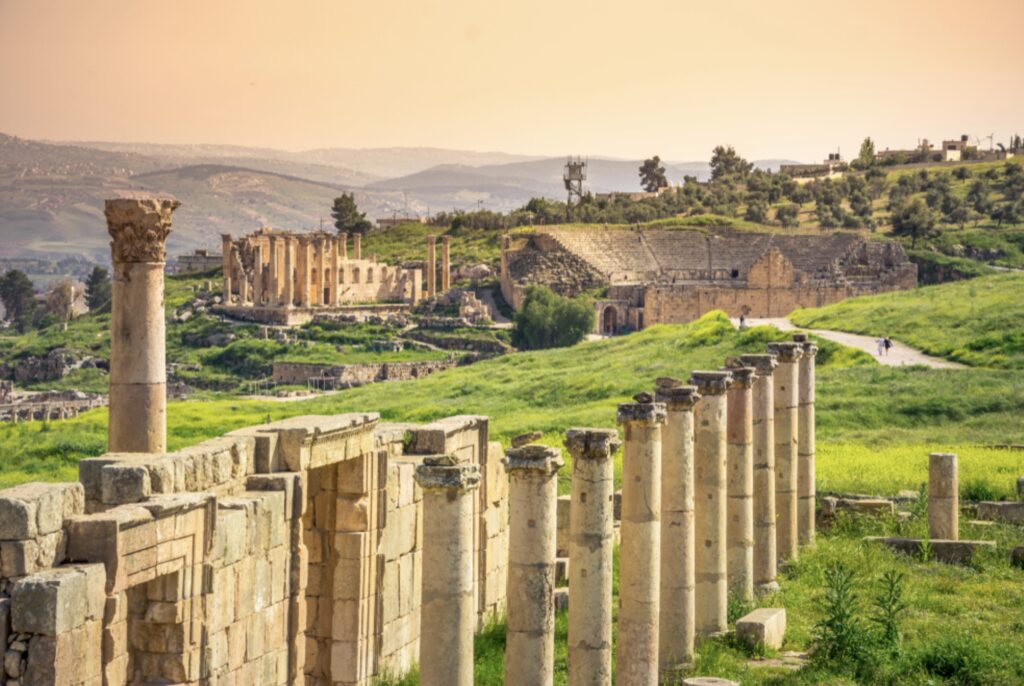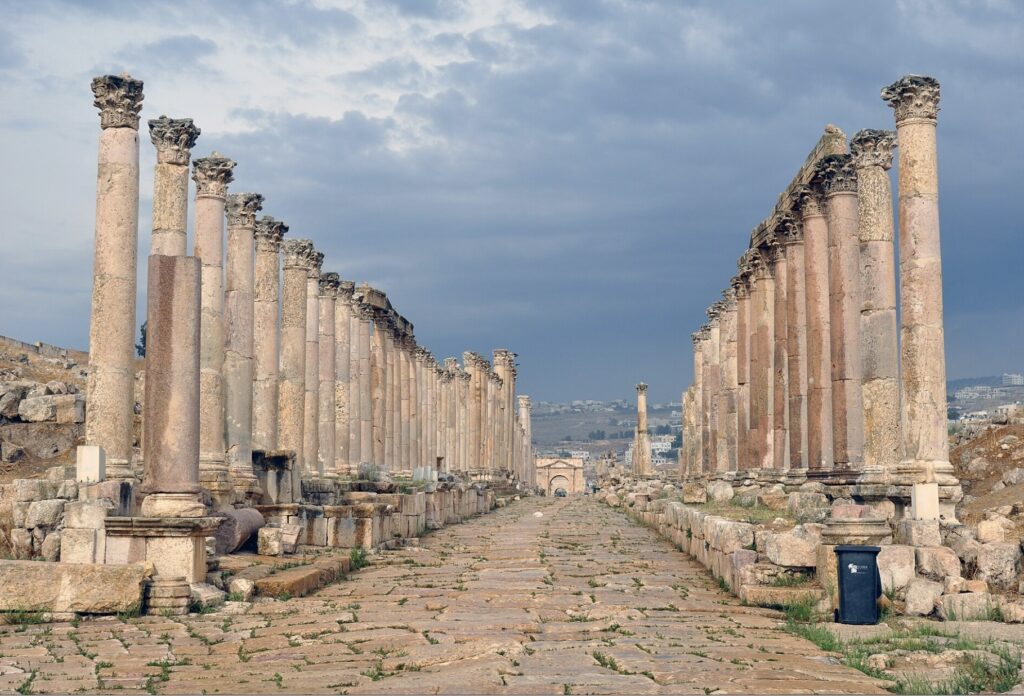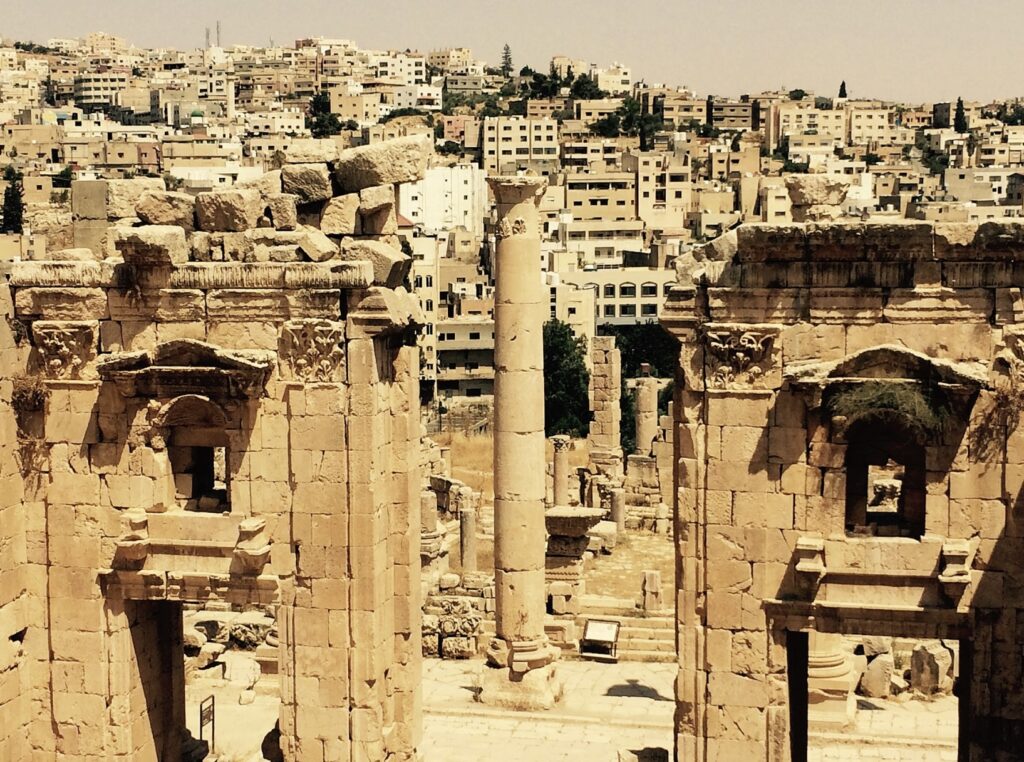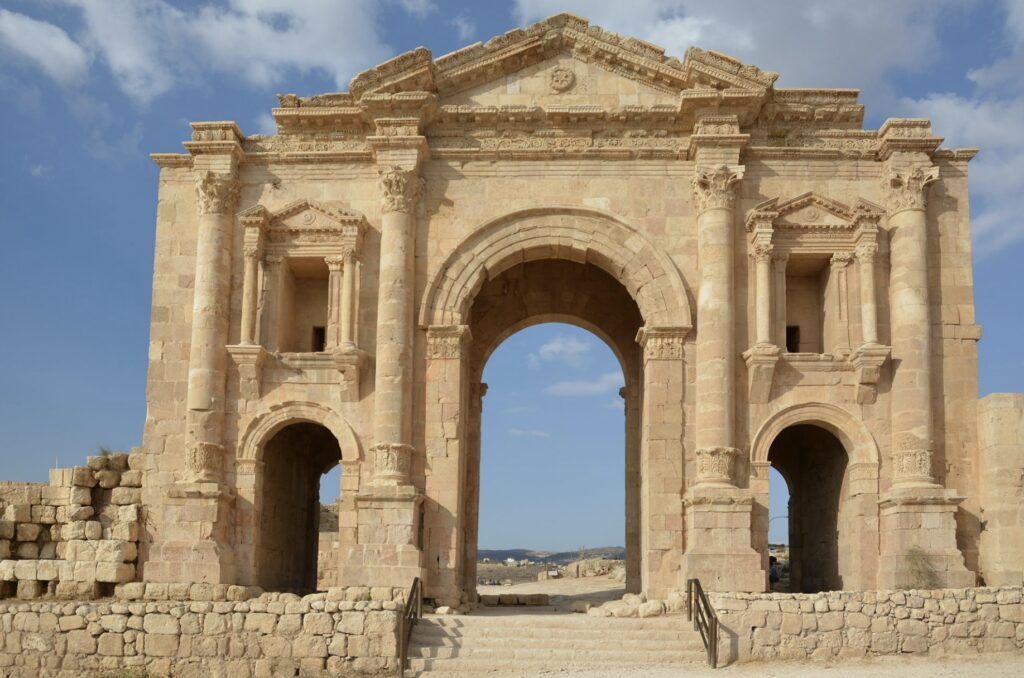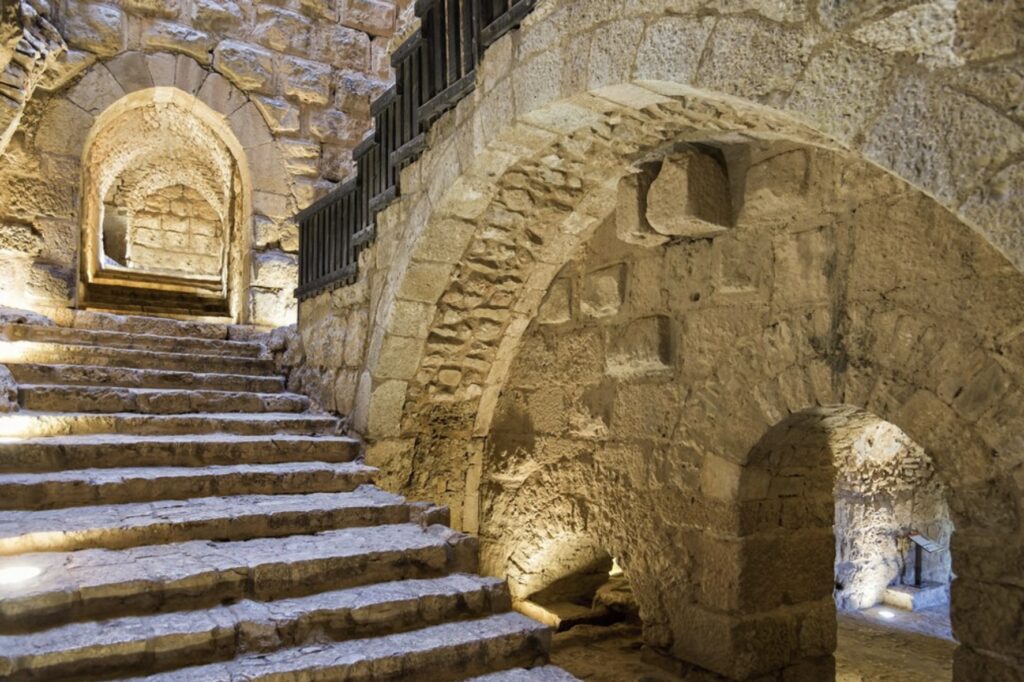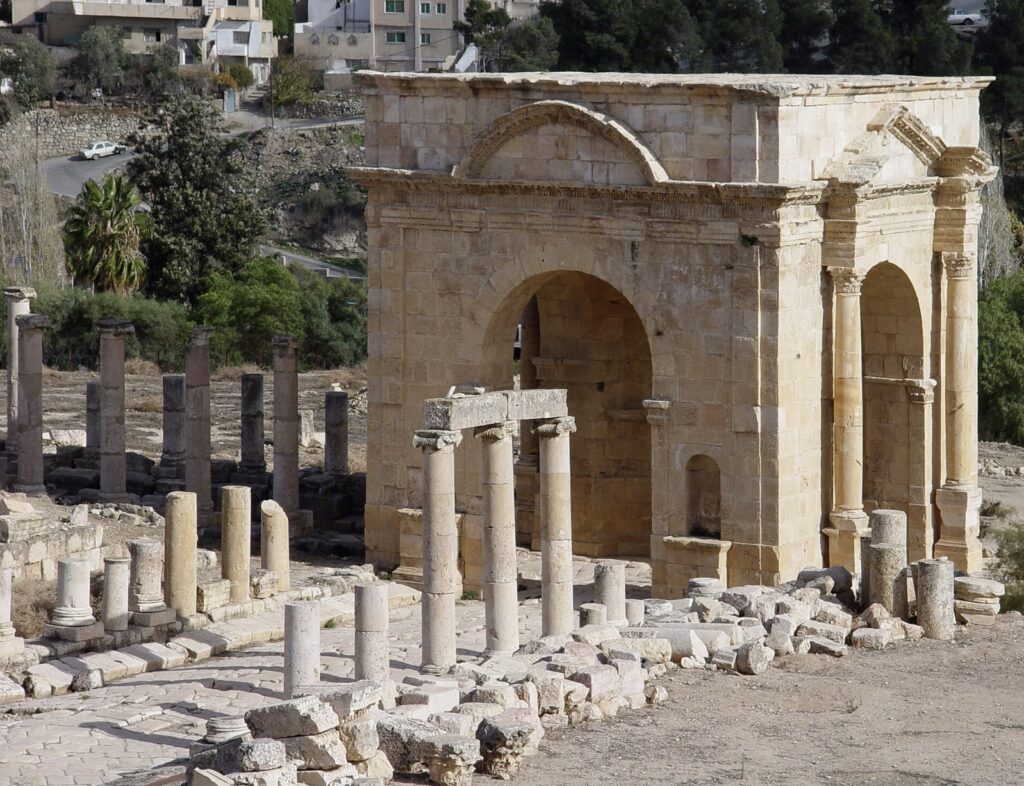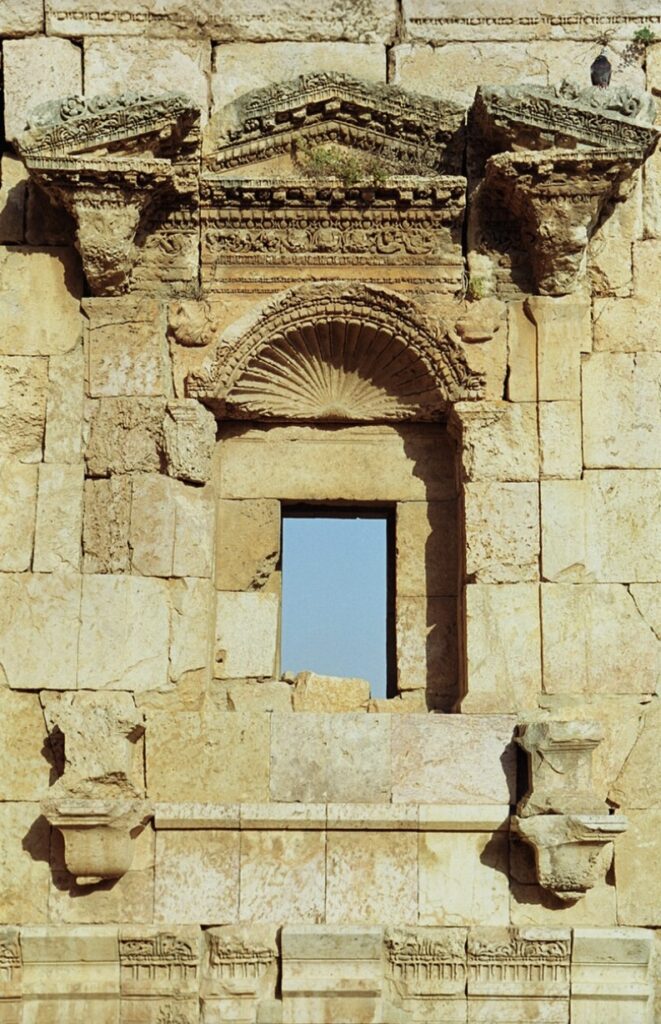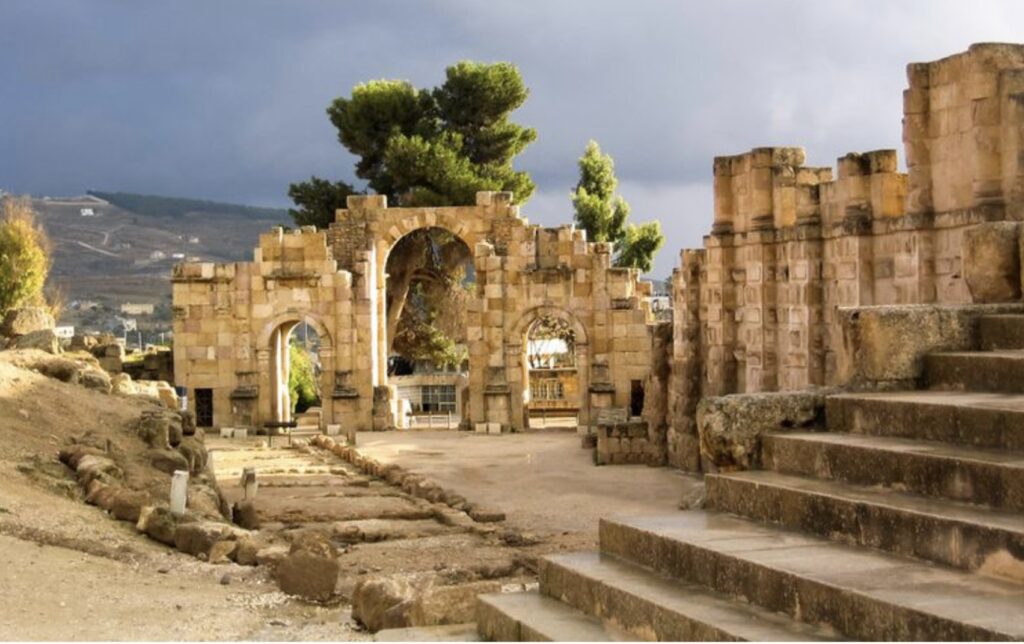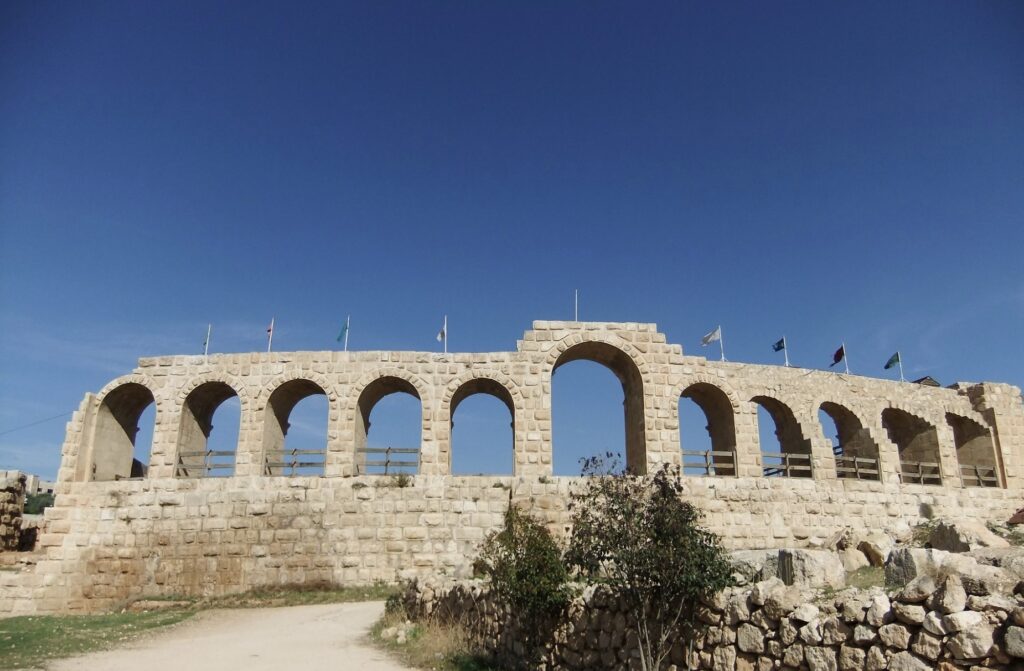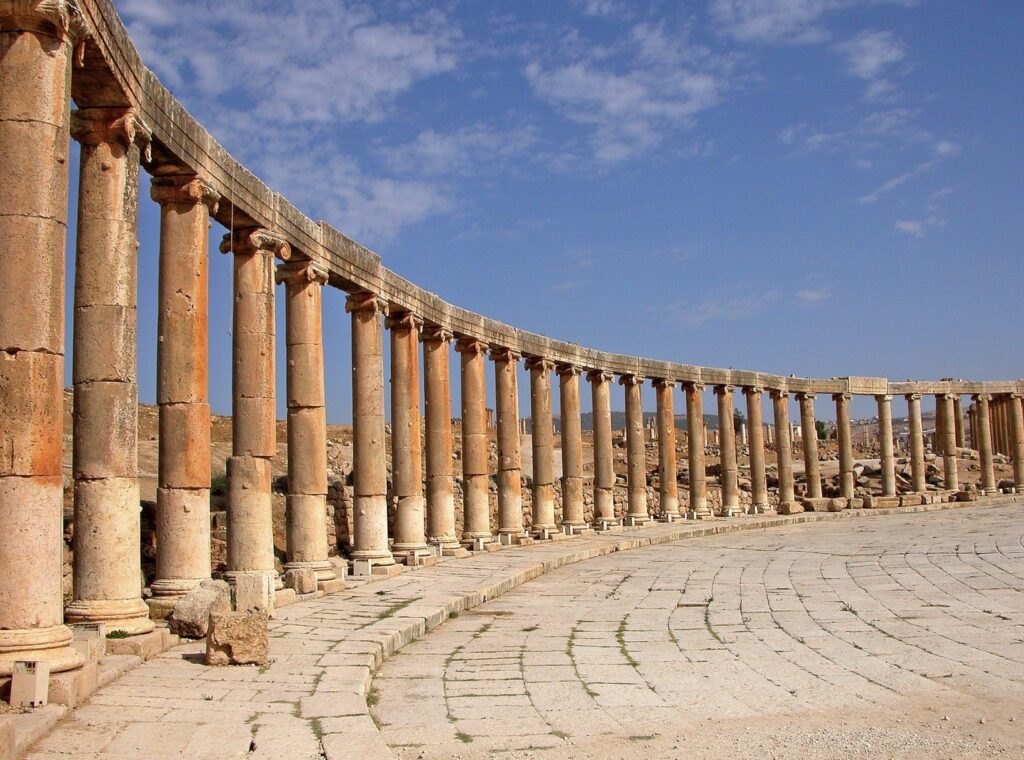Jerash, one of Jordan’s most significant historical and archaeological sites, has a rich history that spans several millennia.
Ancient and Classical Periods:
- Early Settlements: Jerash has been inhabited since the Neolithic period, with evidence of settlements dating back to around 7500 BC. However, it began to gain prominence during the Hellenistic period following Alexander the Great’s conquest.
- Roman Era: The city flourished under Roman rule from the 1st century AD. It was known as Gerasa and became one of the ten cities of the Decapolis, a group of cities in the eastern Roman Empire. Jerash benefited from Roman urbanization, resulting in grand architecture and infrastructure. Key constructions during this time included the colonnaded streets, temples (such as the Temple of Artemis), theaters, and the impressive Hadrian’s Arch, built to honor Emperor Hadrian’s visit in AD 129-130.
Byzantine Period:
- Christianity and Byzantine Influence: In the Byzantine era, Jerash continued to thrive and saw the construction of numerous churches. Christianity became widespread, and several churches with intricate mosaics were built, reflecting the city’s significance in the Byzantine Empire.
Islamic and Medieval Periods:
- Umayyad and Abbasid Caliphates: After the Muslim conquest in the 7th century, Jerash remained an important city. However, it gradually declined in prominence due to shifting trade routes and administrative changes. The city suffered further during the earthquakes in the 8th century.
- Later Medieval Periods: During the Crusades, Jerash saw some activity but remained relatively minor compared to its earlier significance. The city fell into obscurity and was largely abandoned.
Modern Rediscovery and Preservation:
- Rediscovery and Excavation: Jerash was rediscovered in the early 19th century by Western explorers. Extensive archaeological excavations began in the 1920s, revealing its well-preserved ruins and bringing the city back into historical and academic focus.
- Tourism and Cultural Significance: Today, Jerash is a major tourist destination, known for its impressive Roman ruins. The annual Jerash Festival of Culture and Arts highlights the city’s historical and cultural importance, attracting visitors from around the world.
Jerash’s development reflects the broader historical trends of the region, from ancient civilizations through Roman and Byzantine influences, to Islamic rule and modern archaeological efforts. Its ruins offer a window into the past, showcasing the city’s historical significance and architectural grandeur.
During Roman times, Jerash, known then as Gerasa, held significant importance for several reasons:
Economic and Commercial Hub:
- Trade and Commerce: Jerash was strategically located on trade routes connecting the Mediterranean with the Arabian Peninsula and the Levant. This position made it a bustling center for commerce, attracting traders from across the Roman Empire and beyond. The city’s wealth and prosperity were largely driven by this trade.
Urban Development and Architecture:
- Urban Planning: Under Roman rule, Jerash was transformed into a model of Roman urbanization. The city featured a well-planned layout with colonnaded streets, public squares, temples, baths, and theaters. The extensive and sophisticated infrastructure reflected the city’s prosperity and the influence of Roman architectural and engineering practices.
- Architectural Marvels: Key structures such as the Oval Plaza, the Cardo (the main colonnaded street), the Nymphaeum, and the magnificent Temple of Artemis showcased the grandeur and architectural ingenuity of the Romans. These structures not only served practical purposes but also symbolized the city’s wealth and importance.
Cultural and Social Significance:
- Cultural Integration: As part of the Decapolis, a group of ten cities in the eastern Roman Empire, Jerash was a melting pot of cultures. It integrated Greco-Roman culture with local traditions, creating a unique blend of architectural styles, religious practices, and social customs. This cultural fusion was evident in the city’s public spaces and buildings.
- Public Life and Entertainment: The city boasted two theaters—the South Theater and the North Theater—indicating a vibrant public life and a strong tradition of entertainment. These venues hosted a variety of performances, including plays, musical events, and possibly gladiatorial contests, reflecting the Roman emphasis on public entertainment and civic engagement.
Political and Military Role:
- Political Importance: As a significant city in the Roman province of Arabia Petraea, Jerash played a crucial role in the administration and governance of the region. It served as a regional hub for political and administrative activities, further cementing its importance in the Roman Empire.
- Military Presence: Jerash’s strategic location also meant it had military significance. Roman legions were stationed in and around the city to protect trade routes and maintain stability in the region. This military presence contributed to the city’s security and facilitated its economic growth.
Religious and Spiritual Center:
- Religious Significance: The city was home to several important temples, including the Temple of Zeus and the Temple of Artemis, which were central to religious life in Jerash. These temples attracted pilgrims and visitors, further enhancing the city’s status as a religious center.
In summary, Jerash’s importance during Roman times stemmed from its strategic location, economic prosperity, architectural grandeur, cultural integration, political role, and religious significance. The city’s well-preserved ruins today offer a vivid glimpse into its illustrious past and its crucial role in the Roman Empire.
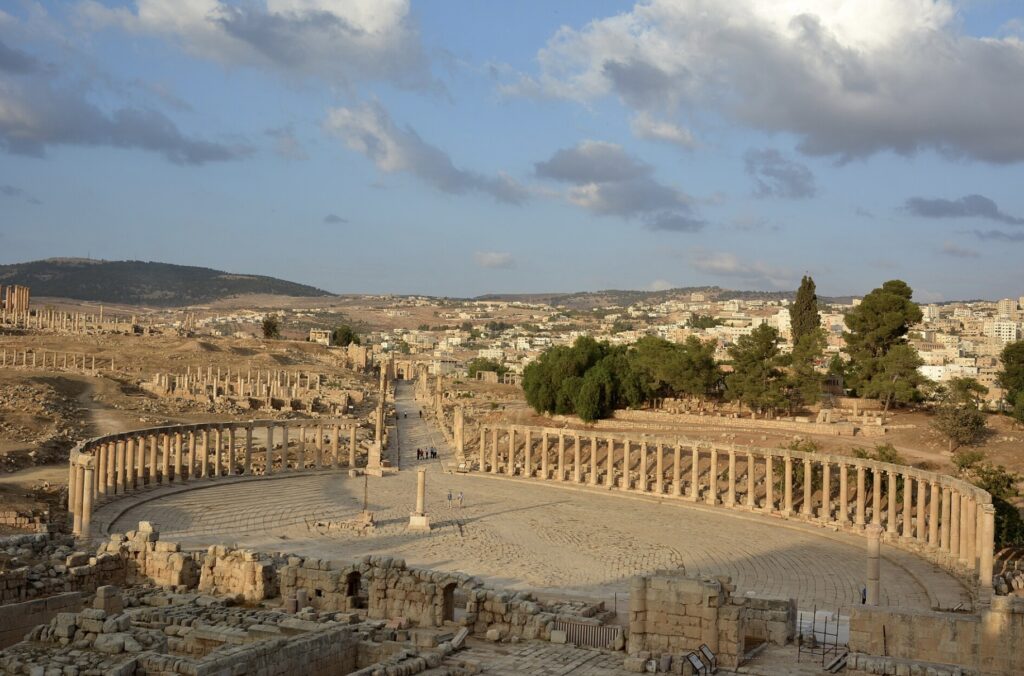
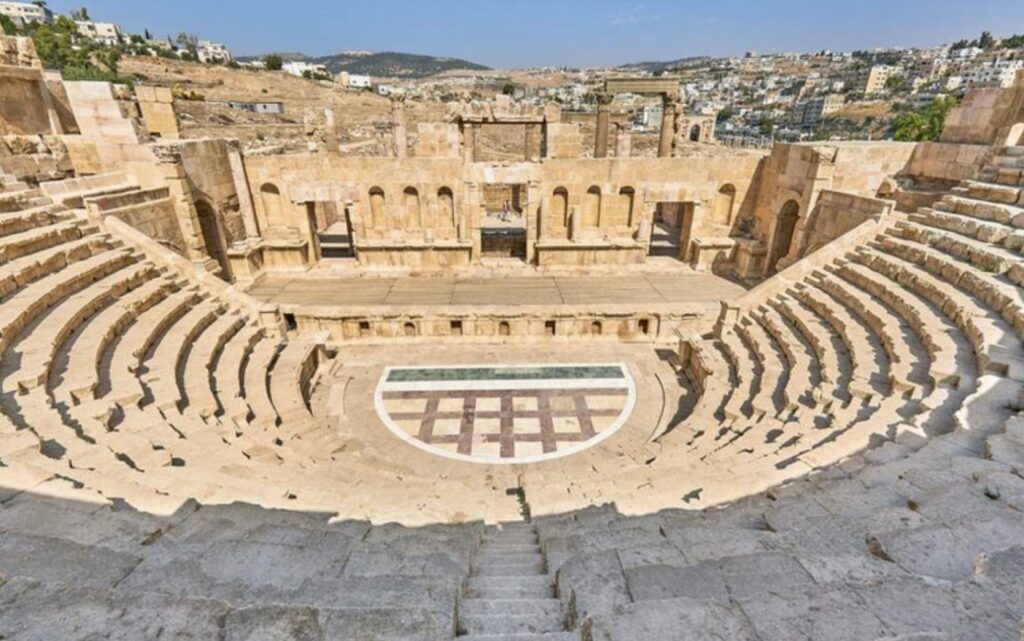
Jerash is home to several major ancient archaeological sites, each with unique features that highlight the city’s historical and architectural significance. Here are the key sites:
1. Hadrian’s Arch
- Special Features: This monumental arch was built in AD 129-130 to honor Emperor Hadrian’s visit to Jerash. Standing nearly 13 meters high, it originally marked the southern boundary of the city. The arch is notable for its impressive size and intricate carvings.
2. Oval Plaza
- Special Features: A distinctive and unique feature of Jerash, the Oval Plaza is an enormous, open space measuring about 90 by 80 meters, surrounded by 160 Ionic columns. It served as a central gathering place and is connected to the Cardo (the main street) by the South Gate.
3. Cardo Maximus (Colonnaded Street)
- Special Features: The Cardo is a 600-meter-long colonnaded street that runs through the heart of Jerash. It was the main thoroughfare, lined with shops, public buildings, and monuments. The well-preserved columns and stone paving, complete with visible chariot ruts, highlight the city’s sophisticated urban planning.
4. The Nymphaeum
- Special Features: This ornate public fountain, dedicated to the nymphs, dates back to the 2nd century AD. It features elaborate carvings, niches for statues, and originally had a large water basin. The Nymphaeum exemplifies Roman engineering and decorative arts.
5. Temple of Artemis
- Special Features: Dedicated to the goddess Artemis, this temple is one of the most impressive structures in Jerash. Built in the 2nd century AD, it features massive Corinthian columns, some of which remain standing, and a grand staircase leading to the sanctuary. The temple’s size and decoration reflect its religious importance.
6. South Theater
- Special Features: Built in the 1st century AD, the South Theater could accommodate about 3,000 spectators. It features well-preserved seating tiers, a stage, and excellent acoustics. The theater was used for performances, public meetings, and possibly gladiatorial contests.
7. North Theater
- Special Features: Smaller than the South Theater, the North Theater was constructed in the late 1st century AD and expanded in the 2nd century. It could hold around 1,600 spectators and was likely used for city council meetings and other public gatherings.
8. Jerash Archaeological Museum
- Special Features: The museum houses artifacts discovered in Jerash, including pottery, statues, mosaics, and coins. These items provide insight into the daily life, art, and culture of the city’s ancient inhabitants.
9. The Hippodrome
- Special Features: This Roman circus was used for chariot races and other public spectacles. It measures about 245 by 52 meters and could seat up to 15,000 spectators. The Hippodrome’s layout and structure highlight the importance of entertainment in Roman society.
10. Churches with Mosaics
- Special Features: Jerash contains several Byzantine churches, notable for their intricate mosaic floors. The Church of St. Cosmos and St. Damian, the Church of St. John the Baptist, and the Church of St. George are among the most famous, featuring detailed depictions of animals, plants, and geometric patterns.
These archaeological sites collectively illustrate the grandeur and sophistication of Jerash during its peak in the Roman and Byzantine periods, making it one of the best-preserved examples of Roman urbanism in the world.
